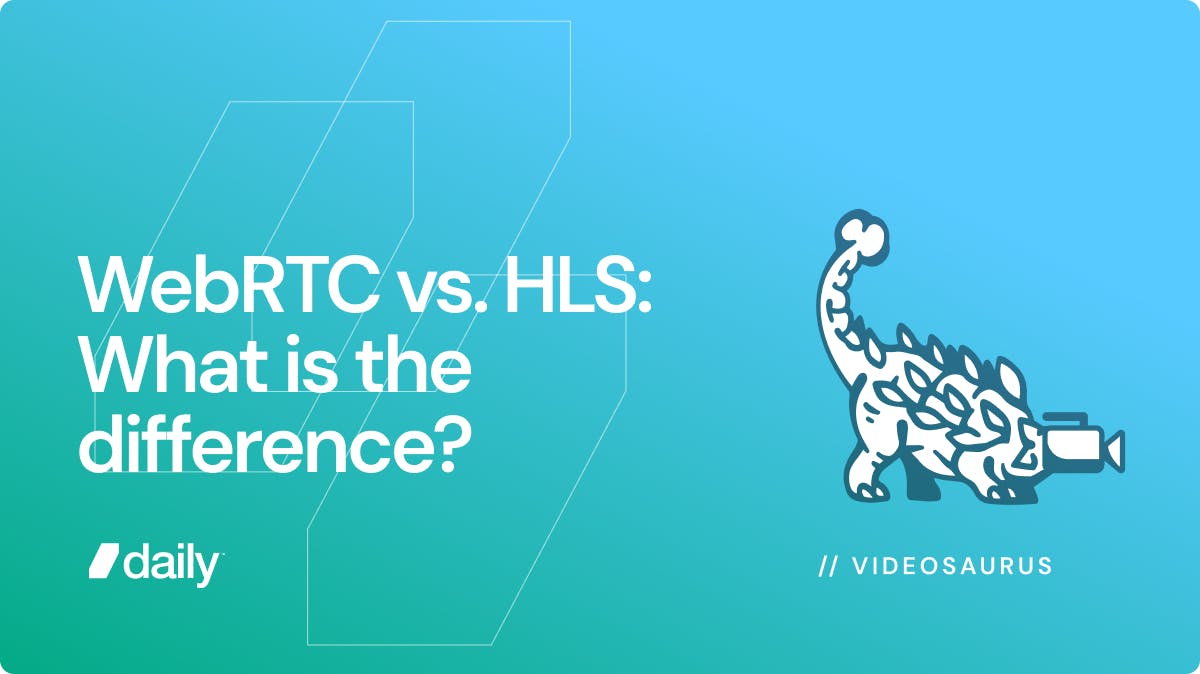WebRTC vs. HLS: What is the difference?

HLS (HTTP Live Streaming) standardizes video delivery to large audiences. HLS is used by platforms like YouTube and Twitch to send recorded videos (“video on demand”) and event broadcasts (“live streams”) to millions of viewers globally. Typical HLS latencies are 10 to 20 seconds. Good HLS implementations use client-side buffering, CDN edge caching, and multi-bitrate encoding to deliver high-quality video to very large audiences at relatively low cost.
Comparatively, WebRTC — “Web Real-Time Communications” — was engineered with a core focus on enabling real-time communications. WebRTC powers video and audio calling applications like Google Meet, WhatsApp voice and video calls, and Discord voice chat and screen sharing. For these conversational use cases, very low latency is a requirement.
WebRTC vs HLS: What is the Difference?
With the explosion of Internet video in general, and real-time video in particular, WebRTC and HLS have become important technology building blocks for websites and mobile apps. WebRTC and HLS both enable the delivery of video over the Internet. They differ primarily in the engineering trade-offs between latency, cost, and quality.
While HLS is the right technology to support the delivery of video to very large audiences, its latency speeds (10-20 seconds) limit it from working in conversational use cases. HLS horizontal scaling enables:
- delivery of on-demand video to any user with an Internet connection
- delivery of live streams to millions of passive viewers at “broadcast latencies” of 10 to 20 seconds
For more interactive applications to video use cases, WebRTC is the right technology. A good WebRTC implementation is capable of latencies below 100ms for users in the same geographic region, and below 200ms for users connecting from different regions. Balancing latency against video quality is one of the challenges inherent in delivering real-time video and audio to users anywhere in the world, on any network and any device. Large-scale WebRTC applications run on sophisticated infrastructure that is specialized for real-time media routing and bandwidth management.
WebRTC’s real-time latency enables:
- small-group conversations (telehealth, teaching and tutoring, video calls)
- large-group interactive experiences (games, events, virtual spaces, metaverse apps)
- real-time auctions and live commerce
- interacting with AI characters, copilots, and Large Language Models
It’s also possible to use both WebRTC and HLS together. WebRTC can power live, interactive sessions with up to 100,000 participants, and HLS can be used to record those sessions or stream them to even larger audiences.
- WebRTC-powered content such as video podcasts, panel discussions, and teaching sessions can be recorded and HLS can be used to deliver the recordings as on-demand video assets.
- WebRTC sessions can be composited and encoded as HLS streams and delivered live to very large audiences. With this hybrid approach, the WebRTC participants have an interactive experience, and the HLS viewers have a passive viewing experience
For a technical deep dive into video delivery standards, latency, codecs, and engineering trade-offs, read our explainer, Video live streaming: Notes on RTMP, HLS, and WebRTC.
Want to learn more about WebRTC? Visit our community, developer resources, or our blog.


